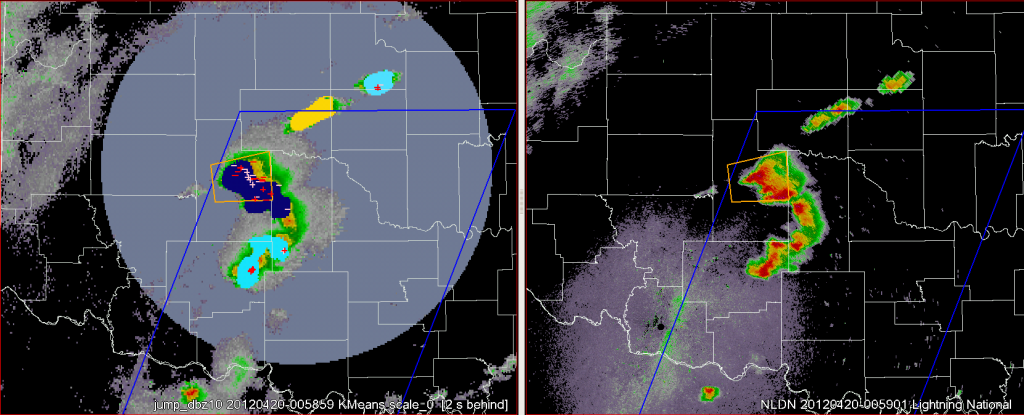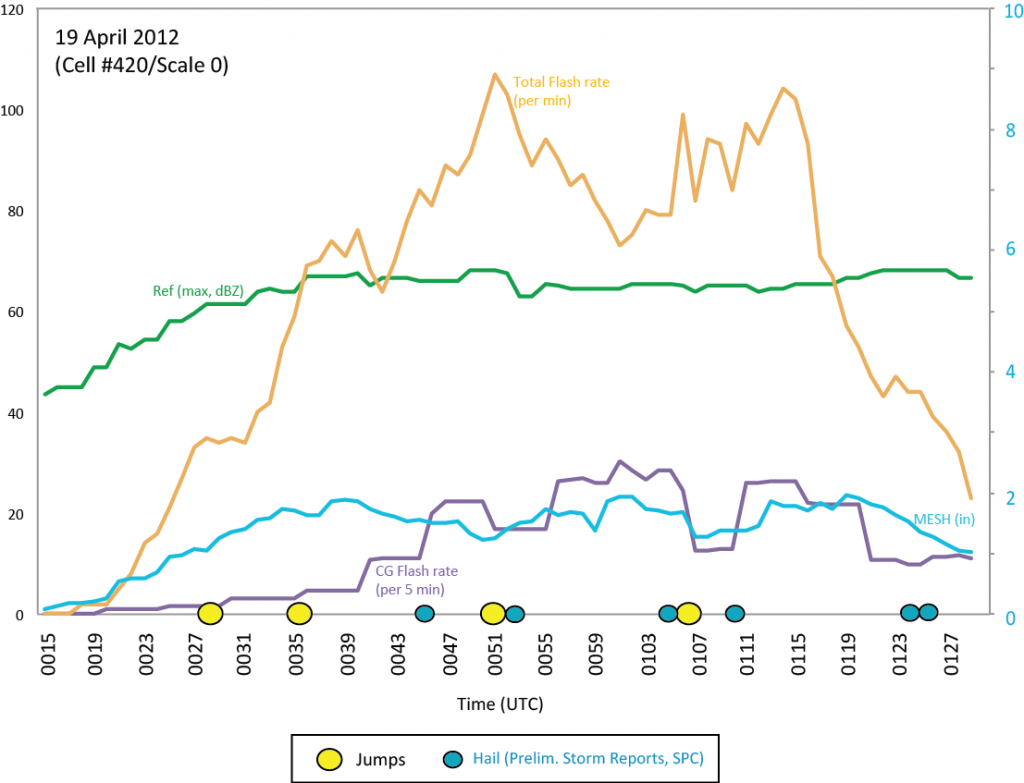It was an active evening over two of our networks last night, with lightning jumps occurring on multiple storms in OK & TX. SHAVE was active as well though phone numbers in some of the areas were a bit sparse and calling ended at 9pm CDT, with many storm reports appearing just after this. Luckily, storm reports in the region were plentiful including one of 3 in hail SE of Plainview, TX.
Oklahoma (Caddo/Grady Co. storm):

Storm trends, jumps and storm reports (SPC, prelim) for this same storm:

There were multiple other storms in Oklahoma that also had lightning jumps. These storms were along the line from central Canadian Co through NW Oklahoma Co into Logan, Lincoln and Payne Counties. Watching the realtime feed it seems that many of the ‘jumps’ were due to storm mergers along the line. It will be interesting to compare storm cluster size with timing of the jumps in post-analysis. SHAVE did call along this line, but found only dime-to-nickel-size hail.
Plainview, TX storm:
(details to be completed)
—–
SHAVE closeout at Fri 20 Apr 2012 015711 GMT: SHAVE made ~103 calls today. We had 30 hail reports with 2 being severe (1.0″+), 0 being significant (2″+).
SPC storm reports:
http://www.spc.noaa.gov/climo/reports/120419_rpts.html

